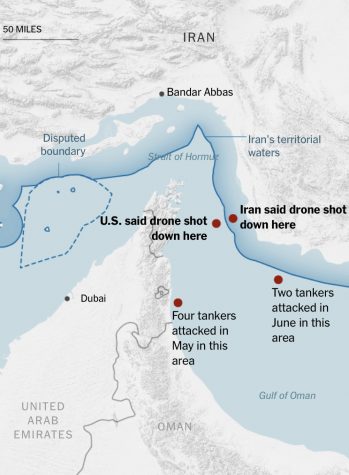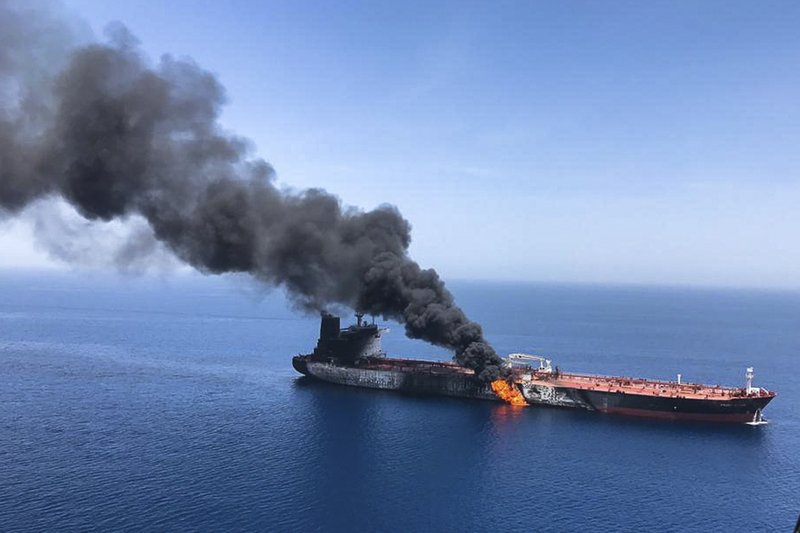The Strait of Hormuz: Tension and Siege in the Middle East
Source: https://www.apnews.com/d67714ab8ac344a3b3af19cca1c20192/gallery/d551c78a1b8f4fa89f4b27b50f13b3de
August 14, 2019

https://www.nytimes.com/2019/06/20/us/politics/drone-shot-down-iran-us.html?smid=nytcore-ios-share
Imagine waking up to a headline of President Trump declaring war on Iran. A few days ago this was almost reality. On June 13th, 2019, two oil tankers were attacked off the coast of Iran, in the Strait of Hormuz. The first ship, The Kokuka Courageous as reported by The New York Times “was about 20 miles off the Iranian coast when it transmitted an emergency call for help after an initial explosion.” Just days after this, an unarmed United States drone was shot down by a Iranian missile; however, where the drone was flying is disputed by both governments. The Iranian government said the drone was flying in their airspace while the United States said that the drone was in international airspace. Recently, on August 4th, another oil tanker was seized by the Iranian Navy for allegedly smuggling oil through the Strait.
The Kokuka Courageous is a Panamanian registered oil tanker that was heading towards Singapore when it was attacked. The other ship—the Front Altair, is a chartered tanker that contained crude oil traveling to Taiwan.
How does this affect global tensions and trade?
The Strait of Hormuz is a strategic shipping region where 20.7% of the world’s petroleum product travels through. China has offered support to escort ships traveling through the Strait in response to the United States call to create a coalition to support and protect ship routes within the region. The United States is also lobbying other countries to join and protect the ships. This policy surprisingly failed with the close United States ally–Germany. When asked to join the coalition with France and the United Kingdom, Germany denied to. This was a shock to the international community because of Germany’s close ties with the countries that are participating. The United States also reached out to South Korea to see if they are willing to send military personnel. South Korea shipping uses the Strait, but South Korea has not responded.
So why is the Strait of Hormuz important?
Like previously stated, the Strait of Hormuz is an important shipping location for petroleum. The Strait of Hormuz is also in a geographical location that is important to the global economy. When the attacks happened the global oil prices rose 4% . CNN Business stated that “About 22.5 million barrels of oil a day passed through the Strait of Hormuz on average since the start of 2018…the amount of oil passing through the Strait of Hormuz is roughly double the entire oil production of the United States.”
The Strait of Hormuz is a centerpoint of trade for global oil. The tension from the attacks is affecting the global economic and political scene. It will be interesting to see how this will play out and what steps the United States will take if Iran becomes more aggressive.












